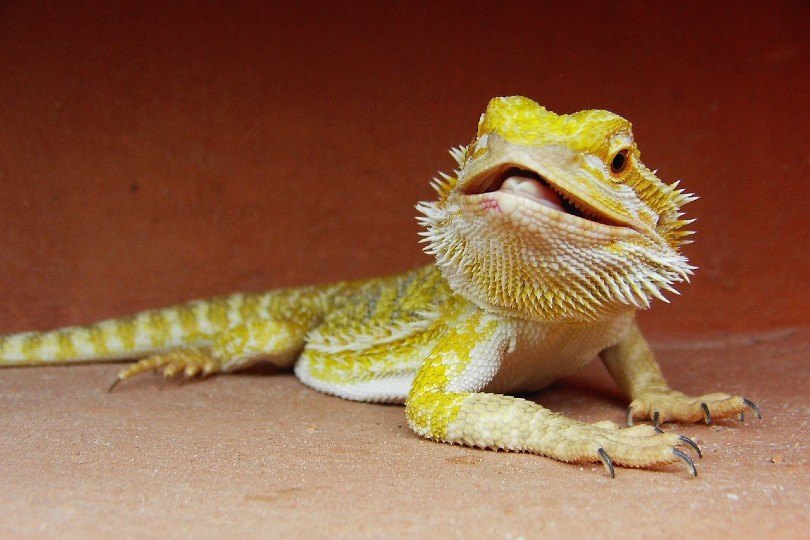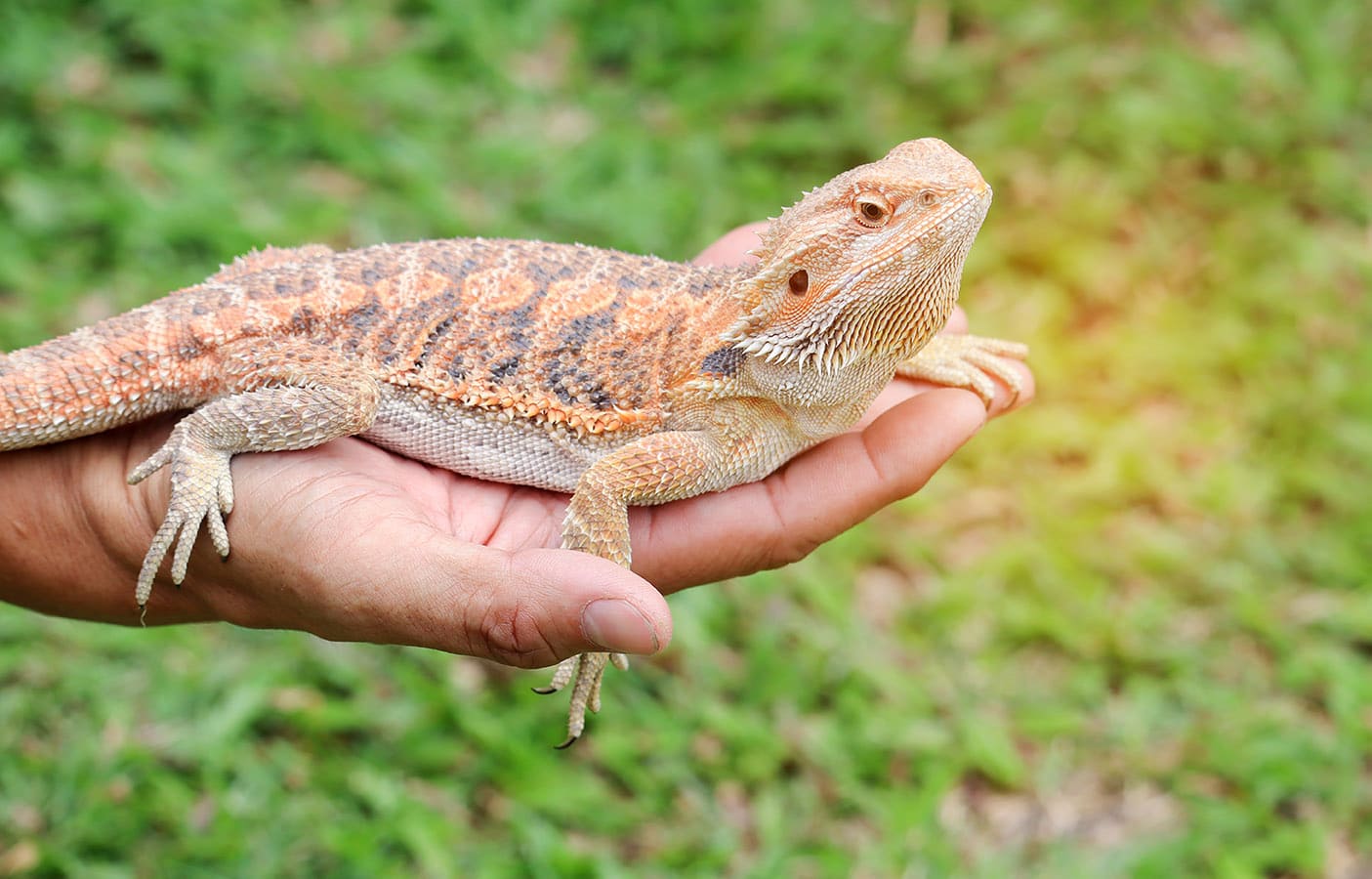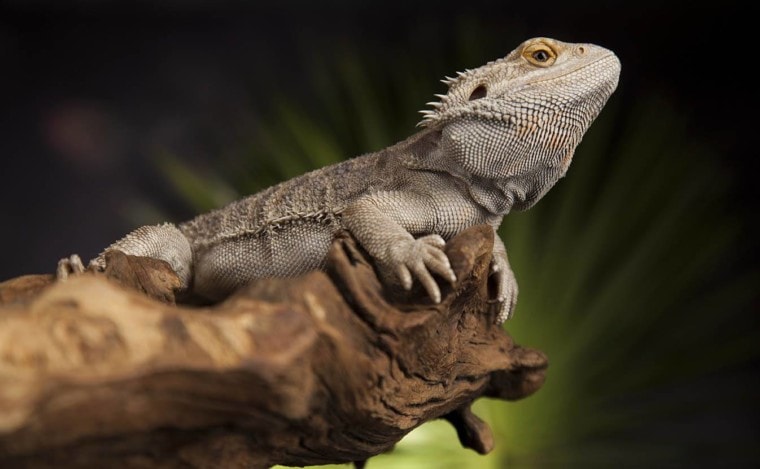
Bearded dragons are growing in popularity as pets, thanks to their distinctive personality. They also have a longer lifespan than most pets—they can live up to 15 years!
It can be alarming to see your beardy turn black suddenly, especially if you are a first-time beardy owner. Here is everything you will need to know about the color change in beardies.
Bearded Dragons Change of Color & Turning Black
Bearded dragons are capable of partitioning color to specific parts of their bodies because they have chromatophores. Chromatophores are cells that contain pigments and reflect light that generates their eye and skin color when reacting to their surroundings.
The color transition might occur gradually as your bearded dragon grows. Though some beardies may turn black due to the natural aging process, it is best to confirm your pet’s color changes with an exotic vet to ensure that they are healthy.
Apart from the age factor, your beardy can change color and turn black for multiple reasons, ranging from communication to camouflage. And, it can happen on a scale of seconds to minutes, depending on the trigger.
Is It Bad?
Bearded dragons can change their dorsal coloration to different shades in various body parts like the neck, head, tail, stomach, chest, back, stomach, or all over the body. In many instances, these changes may be a normal reaction to their environment or surroundings.
These remarkable abilities to change colors were made possible by breeders that selectively bred the beardies over many generations. The breeding efforts made it possible for reptile enthusiasts to choose their beardies in various colors and patterns.
Although color changes are expected with beardies, you should pay attention to the circumstances leading to the sudden transition. The reason for the color switch ranges from internal reasons to the animal’s surroundings. It is upon you to understand why a naturally-colored dragon can change to black.
The 13 Reasons Why Your Bearded Dragon Is Turning Black
1. Temperature Regulation
Temperature change is the most common reason for a beardie to turn black. Since these reptiles thrive on high heat, darker shades help absorb heat faster than other colors. So, when it gets cold and chilly, they turn their skin black to soak up and absorb as much heat as possible.
Having a black color on their backs reduces the time they take to reach their body temperature. Most dragons turn black more often in the morning and return to normal after basking for a couple of hours later in the day.
You can know if your pet is cold by measuring the temperature ranges in their enclosure. Ensure that adults’ basking enclosures range from 95–105°F (35-40.5° C) and 105–110°F (40.5-46°C) for baby beardies.
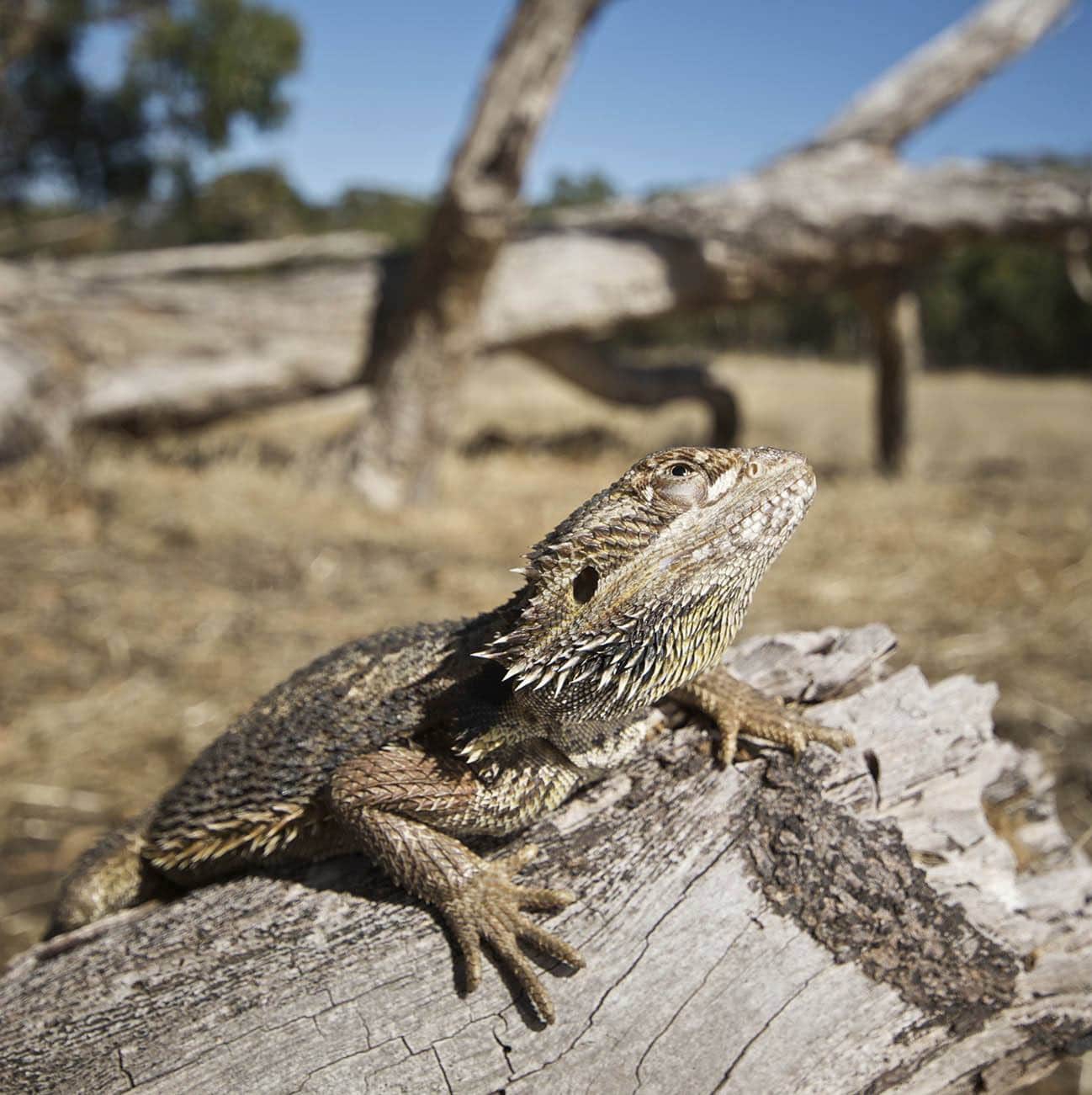
2. Feeling Threatened/Scared
Beardies retaliate to threats or show fear by turning dark to warn the potential threat against attacking or messing with them. The threats could include other pets or your activities infringing in a beardies’ space. However, the color resolves as soon as your pet gets comfortable with their enclosure again.
For this reason, you should ensure your lizard friend is comfortable by providing a stable and safe environment. It might require you to exercise patience while handling them and keeping other pets away.
3. Stress
Your lizard friend can turn black as a way of letting out the stress within and projecting their feelings. Triggers of stress include relocation, birds, other pets messing with them, loud noises, or vibrations.
It would help if you calmed them down by removing the stressors. Without the stressors, the beardy can return to their usual color quickly.
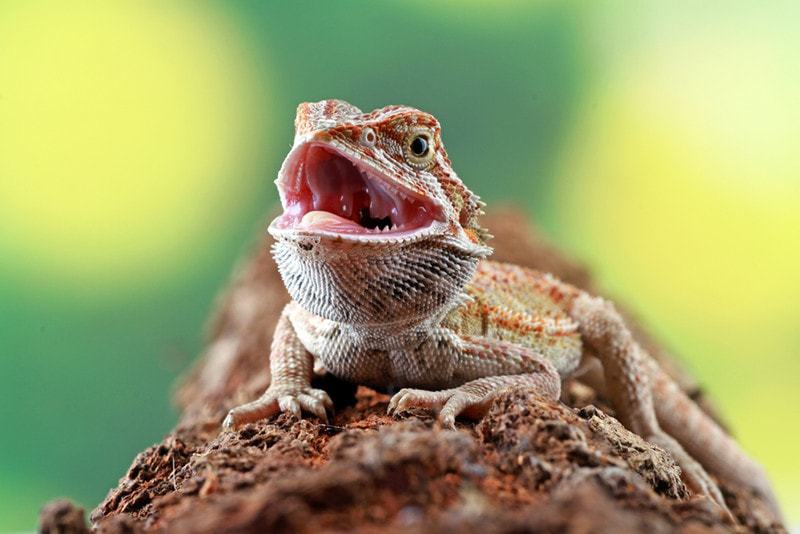
4. Looking for a Mate
Male beardies usually have darker beards than the female. In addition, their beards often turn black during their mating season. It is hypothesized that doing so keeps the male warmer (as the color black absorbs heat) and they can spend less time basking and more time looking for a mate.
A male beardy will also include head bobbing alongside his dark features to flirt with the females. However, this behavior only applies to those of at least half a year old. There’s not much you can do to stop your pet from changing color during this season because hormones are in control.
See also: How Many Babies Do Bearded Dragons Have? How Many Eggs?
5. After Brumating
It’s not unusual to see your bearded dragon turn black after brumating smoothly. After brumation, adjusting to long hours of daylight and finding their appetite again after coming from a deep sleep affects their mood.
For this reason, the dragon can darken for days and weeks until they readjust. Please do not push your pet around too much. Instead, give them time to transition to their old selves.

6. Feeling Territorial
Darkening to show dominance isn’t so common unless you are keeping more than one beardy. If that’s the case, you’ll notice one of the pets, especially the male changing color to signal that he is now dominating over the space.
Your pet will accompany the coloration with other behaviors like head bobbing or lying on top of a rival when marking their territory. Keeping two dragons in the same space isn’t a good idea because these dragons are solitary creatures. You risk terrible fights over territory or sexual harassment of the females by the males.
7. Displaying Aggression
Just like a human’s face can turn red due to anger, a beardy turns black to show your beardie is mad or annoyed. It usually occurs during upsetting baths or when they’re around other pets.
This color-change is a signal that you need to remedy the situation. If a pet is making your beardie mad, keep them far away from your dragon. And if it is the bath, well, don’t bathe them regularly.
Instead, mist your pet or give them water droplets on their snout to lick. Only bathe them during shedding (if needed).

8. Feeling Unwell or Sick
This is the reason why you should always be on the lookout to notice when your lizard friend darkens. A bearded dragon can turn all black or develop circular stress marks when battling severe illnesses.
Other accompanying signs like lack of appetite, reduced movement, or swollen belly indicate that your dragon is unwell. Take your pet to a vet as soon as you see these signs alongside the black color.
9. Your Beardie Is Not Comfortable Around You
If you adopted a beardie recently, it might take time for them to warm up to you. For this reason, your beardy can turn black until the day they start trusting and getting comfortable around you.
The best approach is to give your pet time and space to get used to you. If you rush the bonding and interact with your beardie before they adjust, there are chances that they’ll turn black.

10. Loneliness
Beardies are smart! If a lonely beardy wants your attention or a chance to play outdoors, they’ll decide to grab it by turning their neck black. If they do this when you let them down in their habitat or after you ignore your pet for a while, the little guy wants your attention so bad. If you suspect that is the reason your beardy is changing color, maybe it’s time to let them out of their tank and cuddle them a bit.
11. Poor General Care
A bearded dragon can sometimes darken because of the small miscellaneous activities around them. For instance, a low diet, dingy habitat, or inadequate lighting can upset your lizard friend. If you discover changes with your little buddy, evaluate your care plan and fix where necessary.

12. New Environment
The entire process of relocating and settling in a new environment seems overwhelming for bearded dragons. The loss of a place they knew as home, new people, and a new enclosure can make them feel insecure and set in anxiety and fear.
The fear and doubts can make them turn black as a way of showing their feelings. The only thing you can do for your lizard friend is to give them space and time to acclimatize. The black color will go away as soon as your dragon starts feeling comfortable.
13. Poor Lighting
Unfortunately, most beardie owners do not understand how much lighting bearded dragons require. And, the misleading information on the internet does not help.
Bearded dragons need enough illumination to stay healthy. You should know that white UV lights are the most suitable for beardies. These lights help build their appetite and improve their mental well-being. To ensure enough lighting, use the correct UVB bulbs, and replace them after every six months.
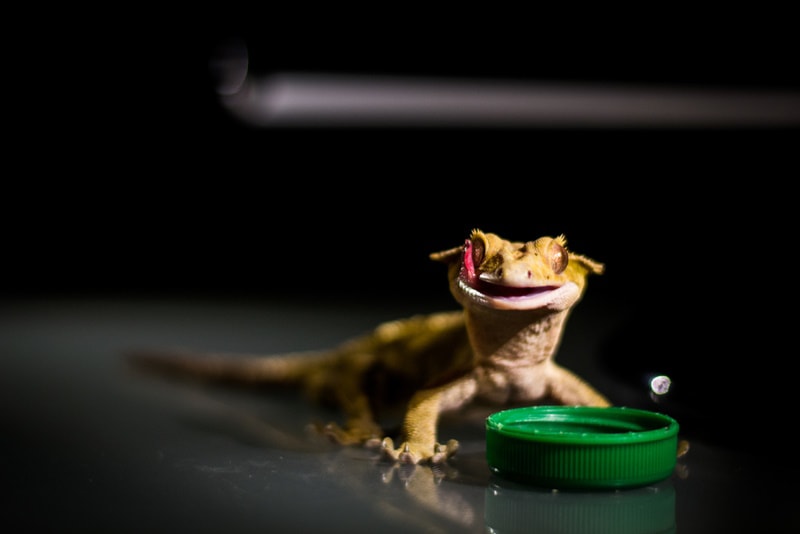
Summary
Although color transformation on beardies is usually not a cause for alarm, a loving beardy parent will try to understand why his pet is turning black. To achieve this, observe and maintain your pet’s surroundings.
Beardies’ general rule of thumb demands that you look at each situation independently since some cases might require medical attention. Plus, a color change should happen only once in a while and settle down fast.
Whenever in doubt about your Beardie’s color change, it is best to consult with an exotic animal veterinarian. The bottom line about keeping a bearded dragon is keeping them happy and comfortable, and your vet can help you go just that!
Related Bearded Dragon Reads:
Featured Image Credit: Sebastian Duda, Shutterstock






